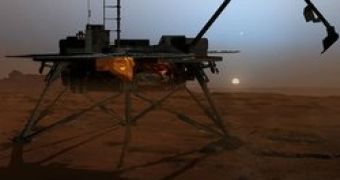The next robotic probe scheduled to land on Mars is the Phoenix Mars Lander, a new rover built for the purpose of touching and analyzing Martian water for the first time. Right now it is being prepared for launch at NASA's Kennedy Space Center in Florida.
But before the actual launch, scientists are concerned that gusting winds and sand blown off by the exhaust plumes from the Phoenix spacecraft's landing engines could adversely affect the Mars probe, complicating the mission of gathering samples of frozen soil from the surface of the planet.
Nilton Renno, an associate professor in the College of Engineering's Department of Atmospheric, Oceanic and Space Sciences, is a member of the Phoenix science team that proposed a series of tests and simulations to see the exact way Martian dust could interfere with the instruments on board Phoenix.
"I proposed that my engineering students look into some of the challenges that the Phoenix team will face when the spacecraft arrives at Mars," Renno said. "I wanted the students to contribute to the success of the mission in a meaningful way."
The dust on the surface of the red planet, apparently insignificant, could actually do serious damage to the craft, as it could buffet the spindly, three-legged probe during the critical final seconds before landing, or maybe scour the landing site and strip it of loose soil, possibly even contaminating the martian soil with hydrazine, the liquid fuel used in the thrusters.
"We calculated that if you deploy the soil 10 centimeters above the instrument intake, most of the particles will be blown away and will not fall inside the instrument," Renno said. "So now we want to test that in the lab to see if the calculations are really true."
NASA spacecraft have encountered Mars dust before. The Viking landers of 1976, for instance, weathered two big dust storms without being damaged, but now the agency wants to be completely sure that these particles can't seriously affect the module upon landing.

 14 DAY TRIAL //
14 DAY TRIAL //